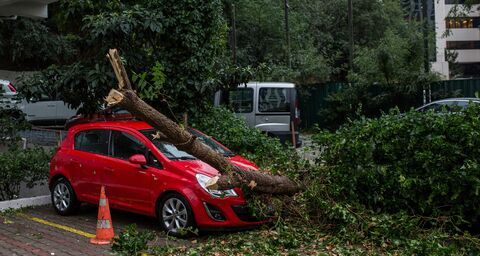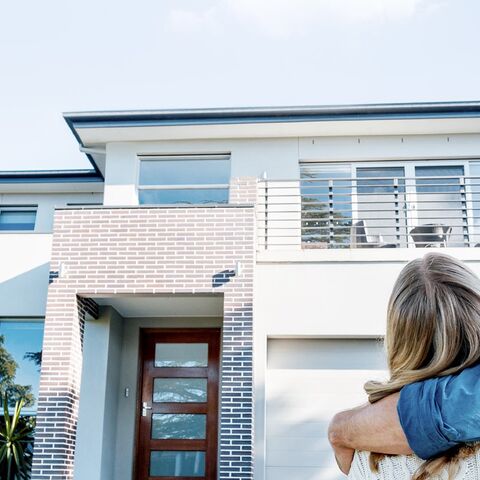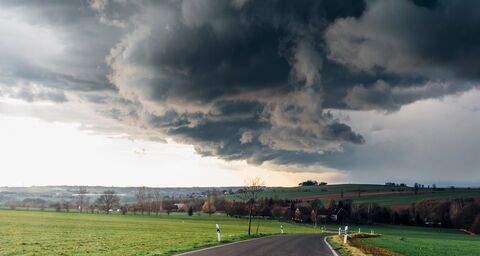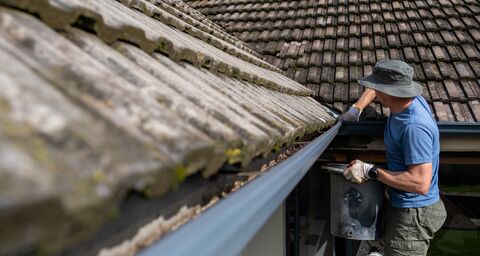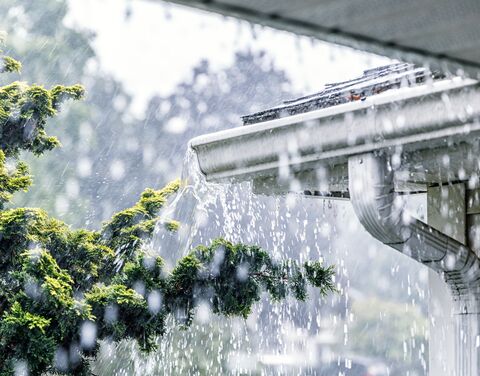
Storm damage – which insurance pays?
Roof blown off? Branches on your car? Tree in the driveway? If a storm has caused damage, rapid assistance is needed. Here you’ll find out which insurance is responsible and when – and what you need to know before and after a storm.
A violent storm can leave a trail of devastation. In the worst case scenario, the house and garden are hardly recognizable. However, even in milder cases, considerable damage is occasionally incurred, sometimes only noticeable at second glance. One thing is certain: storm damage is costly. Appropriate insurance coverage for buildings, household contents, car and, if applicable, the garden and surrounding area makes sense.
Which insurance is responsible?
There are several insurance policies that cover damage caused by storms. Who is responsible depends on what was damaged.
Storm damage to buildings
Building insurance covers storm damage to the building itself, such as roofs or windows. Building insurance is mandatory in almost all cantons (exceptions: GE, TI, VS and AI) and is the owner's responsibility. As a rule, you are insured with cantonal buildings insurance. Only in GUSTAVO cantons is there a free choice of insurance.
Storm damage to the surroundings
If a tree has been uprooted and your garden shed, pergola or fence has been smashed, mandatory building insurance does not pay any compensation. However, you can voluntarily insure yourself against such damage through your private building or household contents insurance. The “damage to the surroundings” add-on is particularly worthwhile if you’ve invested a lot of money in your garden and the surrounding area.
File a claim – but how?
- Time: Inform your insurer immediately about the loss event. Click here to report a claim.
- Documentation: Before you start cleaning up, log the damage with photos/videos and inventory lists.
- Coordination: Only place repair and clear-up orders after consulting your insurance company.
Storm damage to household contents
Damage to household contents is covered by household contents insurance. Household contents include all movable property, i.e. not only the items in your house or apartment, but also potted plants and trampoline, garden furniture and a barbecue. In short: everything that is not firmly anchored. However, the differentiation may vary depending on the canton and the insurance company.
Although household contents insurance is widely used, it is voluntary in almost all cantons. Exceptions: In the cantons of Nidwalden, Vaud, Fribourg, and Jura, household contents must be insured against fire and natural hazards.
Our tip: Make sure you find the right sum insured. If you own more over the years without changing your coverage, you risk having your insurance benefits reduced proportionately in the event of a claim. If, on the other hand, you are overinsured – for example after your adult children have moved out – you pay unnecessarily high premiums.
Storm damage to vehicles
In a severe storm, flowerpots, roof tiles, branches and other things can fly through the air. If your car is hit, it is covered by partial accidental damage insurance. It’s also voluntary, but it makes sense, as it pays for storm damage, marten damage, vehicle theft, windshield damage, etc.
What duties of care do I have?
If you neglect your obligations, you may have a nasty surprise when making a claim – from benefit reductions to allegations involving liability.
Ensure you carry out maintenance
- Buildings must be well maintained. Only then can you assume that your insurance will provide full coverage in the event of a claim. Read our blog to find out why building maintenance is worthwhile in every respect.
- Trees should be checked regularly for stability and health. If this is not done and there is an incident as a result, your duty of care will be deemed to have been violated.
Avoid consequential damage
After a claim, you must ensure that no avoidable consequential damage occurs (in technical jargon “loss minimization”). Let’s say that part of your house roof has blown off. In this case, take temporary measures, so that as little rain as possible gets into the attic: for example, thanks to temporary covering of the roof by a specialist firm. Depending on the extent of the damage, the urgency of the time and the cost of mitigating the damage, it is advisable to discuss such measures with the insurer in advance.
Prevent damage to third parties
Your flower boxes were not adequately secured? If third-party property is damaged or even a person is injured as a result, you are liable. In this case, your personal liability insurance applies. If you have acted within the limits of what was expected and something has nevertheless happened, you are of course not liable.
What actually counts as a storm?
Whether a storm is a storm or not depends, among other things, on the wind speed. Insurance companies only pay out when a certain minimum wind speed is reached. However, there are differences in the definition of storm. Private insurers often pay out for wind speeds exceeding 75 km (even during peak storms or gusts), while cantonal building insurers pay out for wind speeds exceeding 63 km (average over several minutes).
How is wind speed determined?
The requirements vary depending on the insurer. The following methods are common, for example:
- Measuring stations: The reference is a measuring station in the vicinity, preferably at approximately the same height. Or the average value of the three closest stations is calculated.
- Average: Basically, the required wind speed must be reached for an average of ten minutes. Depending on the insurance policy, even gust peaks are sufficient for insurance coverage.
- Surroundings: The insurance also takes into account what happened in the immediate vicinity of the damaged building: For example, were several roofs in the neighborhood lost? Was there significant damage to healthy trees?
Who needs to prove the wind speed?
As a rule, the insurance company will carry out this clarification after a claim has been reported. If the insurer questions whether a local storm actually occurred, the burden of proof lies with the insured. Evidence can be found at MeteoSchweiz, for example. If necessary, you will receive further information and specific services there.

